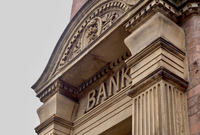Understanding Climbing Cash Rates & The Property Market

Understanding Climbing Cash Rates & The Property Market
(3 Minute Read)
The media's biggest talking points post the financial year are interest rates and inflation. It can be somewhat tricky separating fact from political influence. When making a considerable investment - like purchasing a property - it's best to understand the economy and what factors will affect you in the long-term market.
Before we cover anything, The Reserve Bank of Australia's Deputy Governor, Michelle Bullock, delivered a speech at The Economic Society of Australia QLD 2022 Business Lunch, highlighting the effect of cash rate rises on the property market with insightful resources and scenarios.
The Key Points:
'…as a whole, households are in a fairly good position. The sector as a whole has large liquidity buffers, most households have substantial equity in their housing assets, and lending standards in recent years have been more prudent and have built-in larger buffers for interest rate increases. Much of the debt is held by high-income households that have the ability to service their debt, and many borrowers are already making repayments well above what is required. Furthermore, those on very low fixed-rate loans have some time to prepare themselves for higher interest rates.'
Now for the PRD Perspective.
What Has Happened So Far?
The Reserve Bank of Australia (RBA) has been busy in June and July, announcing 50 basis point increases each month, respectively. After record low interest rates, we are now up to 1.35%, with the Big Four predicting a minimum October rate of 2.35% with a year-end looking towards the low 3's; the media warns to prepare for future rate pain. But what does this mean? Is it all as negative as they make it out? Who is this truly affecting?
What Do Cash Rate Increases Mean for the Consumer?
Several factors contribute to the economy relative to the housing market and consumer engagement. Before we think of cash rates, consider inflation and the cost of living. Inflation in Australia is the highest it's been since the early 1990s. Naturally, the pandemic contributed to this rise; similarly, Russia's invasion of Ukraine has not helped. Between supply chain difficulties, government subsidies, and industries' capacities for competitive wage growth, the pandemic has made money more accessible than ever. The supply chain is sitting firmly behind the demands of population growth & migration. As the demand for skilled labour rises, a chronic workforce shortage is being experienced across all industries; this is despite Australia’s employment rate being at a 48-year low of just 3.5%. PRD research states we are up to 24000 dwellings per annum behind where we need to be, and as inflation increases, people are spending more on necessities. What does this have to do with the housing market?
As the economy shifts and people have built liquidity buffers from the time spent at home during the pandemic, the RBA has responded in kind. Stimulating the economy involves numerous factors, one of which is the rising cash rate. The increase is a direct response to the nest eggs and positive debt-to-income (DTI) ratio many consumers have solidified.
Consumers in the Property Market as Rates Rise Around Them.
The pandemic changed the way banks lend. The most recent housing cycle saw a significant increase in the share of loans at higher DTI ratios. Rates were lower, and as such, the banks adapted. A stress test was conducted on borrowers to establish their ability to service a loan in the eventual rate rise. Currently, the stress test is an additional 3% on the current interest rates, ensuring that higher DTI ratios are managed correctly, and borrowers can ensure loan servicing. The majority of debt belongs to a majority of higher income earners. As such, the interest rate rises can be serviced without strain, despite the increased cost of living and inflation.
The people at risk are the low-income earning/highly indebted and the first home buyers. Neither are mutually exclusive, and despite securing fixed-rate loans from the days of 0.1%, most of these loans expire within the next two years, forecasting a 40% repayment increase. This has created a buyers market for the moment with a potential correction leaning towards a predicted price exaggeration. The loan process now uses the stress test at a higher rate, with many investors still managing to service the newer mortgage and repayments. The media's negative streak is most prevalent for recent and existing first home buyers. It's not the end of the world, but it is something to remember when beginning the purchasing process.
It's an exciting time in the market and the economy. The rates will rise, but the extent is yet to be seen. The property market may have slowed, but the trends are encouraging correction. Seeking insight into the market? Or just looking to have a chat about your property future? Get in contact with PRD Penrith for an obligation-free chat. Buy Smarter with PRD Penrith.
PRD encourages you to do your own research; insights are taken from government sources, and further details can be found on the attached links.








